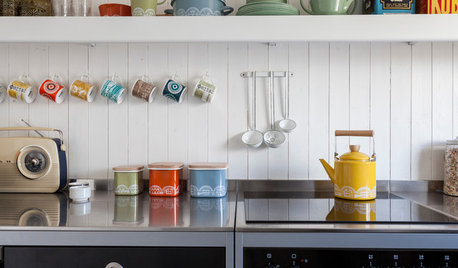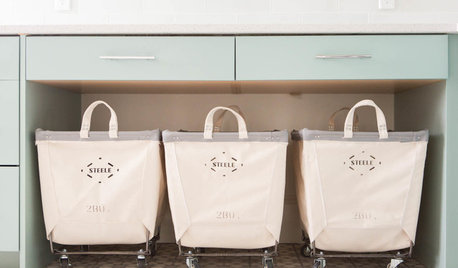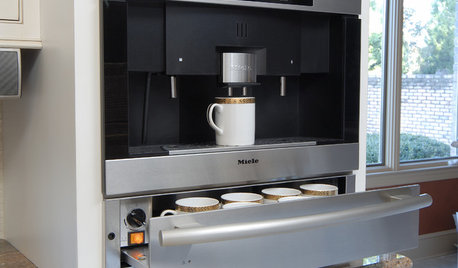Do nny od you have a reverse Osmosis Water Filter?
just1morehosta
15 years ago
Related Stories

HEALTHY HOMEHow to Choose a Home Water Filtering System
Learn which water purification method is best for your house, from pitchers to whole-house setups
Full Story
GREEN BUILDINGJust Add Water: Rain Barrel Magic
Take your rainwater storage from practical to beautiful with a new breed of design-friendly rain barrels
Full Story
GARDENING AND LANDSCAPINGHow to Make a Pond
You can make an outdoor fish paradise of your own, for less than you might think. But you'll need this expert design wisdom
Full Story
LIFEHow Do You Make Your Tea and Coffee in the Morning?
A morning cup is a must for many, and preparation comes in many guises. We look at coffee and tea habits across the Houzz community
Full Story
LIFE10 Beautifully Simple Ways to Go Greener in the New Year
You may just find more green in your wallet along the way
Full Story
KITCHEN DESIGN20 Kitchen Must-Haves From Houzz Readers
We asked you to tell us your top kitchen amenities. See what popular kitchen features made the list
Full Story
MONTHLY HOME CHECKLISTSTo-Dos: Your February Home Checklist
Get busy indoors this month with some time spent cooking, improving air quality and prepping for spring
Full Story
KITCHEN DESIGNThe Most Popular Kitchen Storage Ideas of 2015
Maximizing every inch, keeping necessities close at hand and finding room for technology top Houzzer favorites
Full Story
KITCHEN DESIGNWake Up Your Kitchen With a Deluxe Coffee Center
Get all the ingredients for the perfect morning jump-start with a station dedicated to your cup of joe
Full Story
ECLECTIC HOMESHouzz Tour: Problem Solving on a Sloped Lot in Austin
A tricky lot and a big oak tree make building a family’s new home a Texas-size adventure
Full Story








just1morehostaOriginal Author
Janice
Related Professionals
Fitchburg Landscape Architects & Landscape Designers · Southfield Landscape Architects & Landscape Designers · Clermont Landscape Contractors · Cerritos Landscape Contractors · Dallas Landscape Contractors · Norristown Landscape Contractors · Webster Groves Landscape Contractors · Winchester Landscape Contractors · Hayward Driveway Installation & Maintenance · Providence Driveway Installation & Maintenance · Quincy Driveway Installation & Maintenance · The Woodlands Driveway Installation & Maintenance · Carmichael Fence Contractors · North Miami Beach Fence Contractors · Pensacola Fence ContractorsJanice
Janice
just1morehostaOriginal Author
buckeyefieldsupply
franknjim